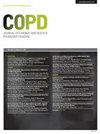Exploring a Potential Causal Link Between Dietary Intake and Chronic Obstructive Pulmonary Disease: A Two-Sample Mendelian Randomization Study
IF 3.1
3区 医学
Q1 Medicine
International Journal of Chronic Obstructive Pulmonary Disease
Pub Date : 2024-01-26
DOI:10.2147/copd.s445706
引用次数: 0
Abstract
Background: Chronic Obstructive Pulmonary Disease (COPD), the most prevalent chronic respiratory condition, significantly impairs patients’ quality of life. The pivotal element in disease management lies in prevention, underscoring the paramount importance of employing a scientific approach to investigate early prevention strategies for COPD.Methods: This study delved into the causal link between 28 dietary intakes and COPD employing two-sample Mendelian randomization. We primarily utilized the Inverse Variance Weighted (IVW) method as the main outcome, complemented by Weighted Median (WM), MR-Egger method, along with several sensitivity analysis techniques, all accompanied by visual representations.
Results: We identified higher odds of COPD following exposure to green beans (OR=1.381, 95% CI=1.119– 1.704, P=0.003) and pork intake (OR=2.657, 95% CI=1.203– 5.868, P=0.016). In contrast, the odds of developing COPD were lower following exposure to dried fruit (OR=0.481, 95% CI=0.283– 0.819, P=0.007), cereal (OR=0.560, 95% CI=0.356– 0.880, P=0.012), and whole egg consumption (OR=0.700, 95% CI=0.504– 0.972, P=0.033).
Conclusion: In light of our study’s findings, we anticipate that strategically modifying dietary choices may offer an avenue for early COPD prevention in the future.
探索膳食摄入量与慢性阻塞性肺病之间的潜在因果关系:双样本孟德尔随机研究
背景:慢性阻塞性肺病(COPD)是最常见的慢性呼吸系统疾病,严重影响患者的生活质量。疾病管理的关键在于预防,因此采用科学方法研究慢性阻塞性肺病的早期预防策略至关重要:本研究采用双样本孟德尔随机法研究了 28 种膳食摄入量与慢性阻塞性肺病之间的因果关系。我们主要采用逆方差加权法(IVW)作为主要结果,并辅以加权中位数法(WM)、MR-Egger 法以及几种敏感性分析技术,所有方法均配有可视化图表:我们发现,摄入青豆(OR=1.381,95% CI=1.119-1.704,P=0.003)和猪肉(OR=2.657,95% CI=1.203-5.868,P=0.016)后,患慢性阻塞性肺病的几率更高。相比之下,摄入干果(OR=0.481,95% CI=0.283-0.819,P=0.007)、谷物(OR=0.560,95% CI=0.356-0.880,P=0.012)和全蛋(OR=0.700,95% CI=0.504-0.972,P=0.033)后,患慢性阻塞性肺病的几率较低:根据我们的研究结果,我们预计战略性地改变饮食选择可能会为未来早期预防慢性阻塞性肺病提供一条途径。
本文章由计算机程序翻译,如有差异,请以英文原文为准。
求助全文
约1分钟内获得全文
求助全文
来源期刊

International Journal of Chronic Obstructive Pulmonary Disease
RESPIRATORY SYSTEM-
CiteScore
5.10
自引率
10.70%
发文量
372
审稿时长
16 weeks
期刊介绍:
An international, peer-reviewed journal of therapeutics and pharmacology focusing on concise rapid reporting of clinical studies and reviews in COPD. Special focus will be given to the pathophysiological processes underlying the disease, intervention programs, patient focused education, and self management protocols. This journal is directed at specialists and healthcare professionals
 求助内容:
求助内容: 应助结果提醒方式:
应助结果提醒方式:


